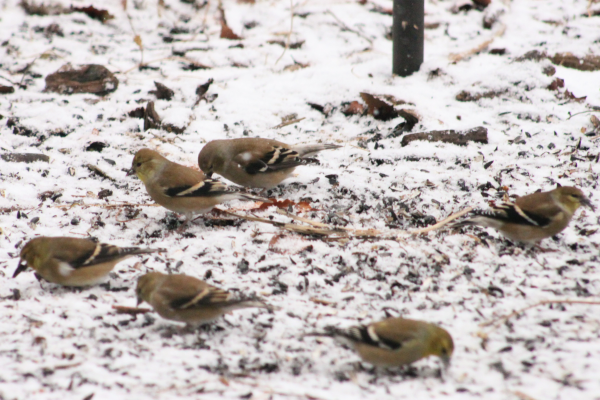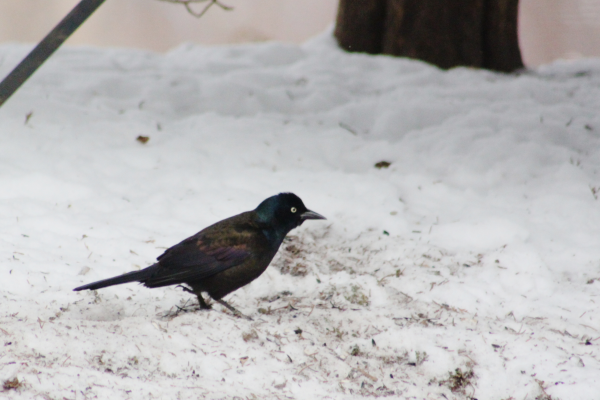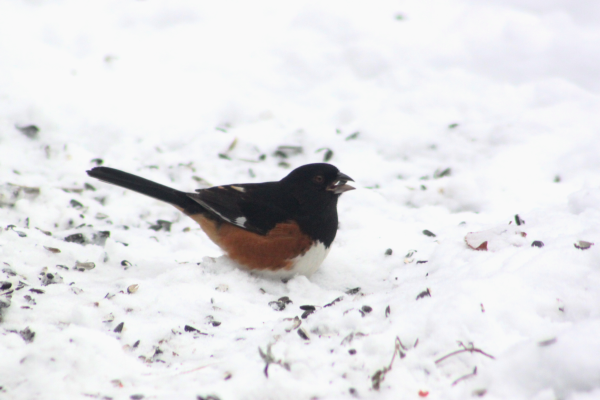Week of December 15

White-breasted Nuthatch
The start of this week brought so much snow that photo options were limited. With trails and roads closed, this week will feature snowy portraits in the Bird Watching Garden. Over the last couple of days, the Bird Watching Garden has been packed as the cold temperatures and snowfall add extra pressure to birds. The shelled peanut feeder closest to the window is the best place to see birds up close. This view is perfect to take note of the white-breasted nuthatch’s slightly upturned beak that is perfect for picking insects out of cracks in tree bark.

Carolina Wren
Another small bird attracted to the peanut feeder is the Carolina wren, but notice the wren has a distinctively downturned beak. Wrens and nuthatches both have beaks well suited to finding insects in small crevices, but slight differences in foraging behavior does help limit competition. Wrens mainly forage for food on or near the ground, turning over leaves and picking around rotten logs. Nuthatches can most often be found making their way down a tree trunk grabbing insects as they go.

American Goldfinch Flocks
American goldfinches become particularly social and form large flocks during the nonbreeding season. This flocking behavior provides them many benefits, from protection in numbers to increased ability to search for food. Along with goldfinches, the Bird Watching Garden also hosts large flocks of house finches – up to over 30 at once!

Common Grackle
Common grackles don’t garner a lot of attention most of the time. They have a harsh-sounding song and in a lot of lighting conditions may look like a plain black bird, but when the light hits them just right their iridescent feathers are reminiscent of an oil slick. They don’t visit the Bird Watching Garden often, but they are larger than most birds that feed in the garden so they can’t be missed when they do! When not in the garden this winter, look for them in large, multi-species flocks with other blackbirds like red-winged blackbirds and cowbirds.

Male Eastern Towhee
Eastern towhees can be seen at The Arboretum throughout the year, but they are most likely to visit the Bird Watching Garden in the winter. Towhees are a member of the sparrow family. Like many of the other sparrows in our area, they are ground feeders that kick at the substrate looking for insects, seeds, and anything else they find beneath the leaf litter or dirt.

Female Eastern Towhee
When towhees visit the garden, they aren’t in a flock like many of the other visitors. Instead, they typically come in a pair. Eastern towhees are sexually dimorphic; this means that males and females look different from each other. Both male and female towhees have a white belly and rust-colored sides. Female towhees like the one pictured here has a brown back and head while the male has a black back and head.

